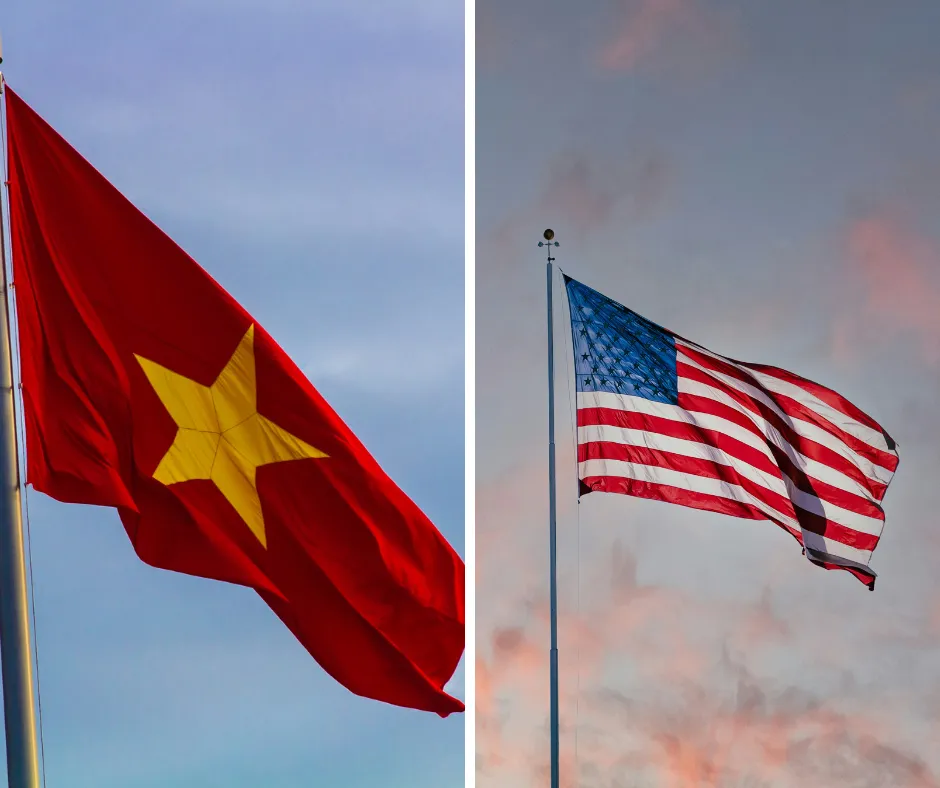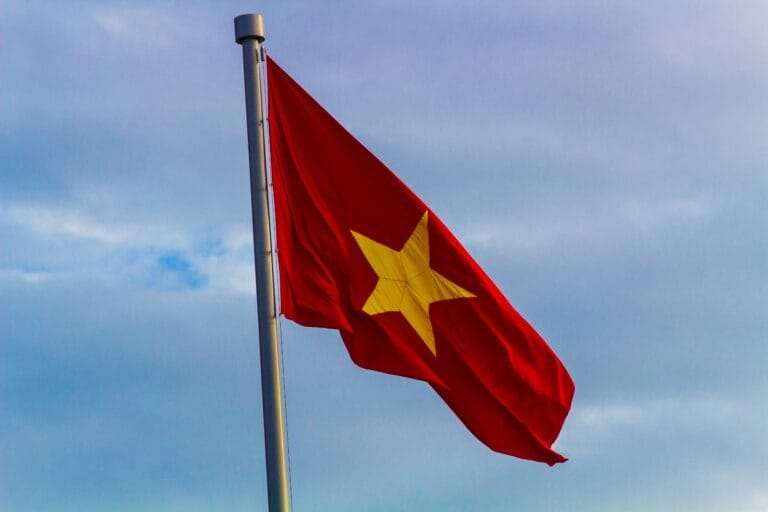Tariff Shock or Strategic Breakthrough? Vietnam at the Crossroads
Published on VietFuturus: Refractions of Vietnam
Read on Medium
A stunning 46% tariff has just been imposed on Vietnam’s export economy, landing like a thunderclap. Overnight, years of impressive trade growth now face a decisive test — a moment that may redefine Vietnam’s trade policy.
The U.S. tariffs impact has been immediate and disruptive, threatening the country’s core economic sectors. But the political response has been just as swift. In a surprising turn, General Secretary Tô Lâm reportedly called President Donald Trump, offering a bold counterproposal: zero tariffs on U.S. goods in exchange for a new framework of mutual terms.
The world now watches as Vietnam’s economic strategy is rewritten in real time.
Zero Tariffs?
Trump, in his characteristic style, quickly responded via Truth Social:
“Just had a very productive call with Mr. To Lam, the General Secretary of the Communist Party of Vietnam, who told me that Vietnam wants to cut their Tariffs down to ZERO if they are able to make a deal with the U.S. On behalf of the United States, I thanked him and told him I look forward to a meeting in the not too distant future!”
So, what does this significant development signal? Is it the prelude to a new strategic alliance, a potential trap, or merely noise before a global realignment?
Why This Moment Matters
As someone born in Vietnam who closely follows global shifts from both inside and out, I see this as far more than a simple trade dispute. This is a pivotal moment — a test not only of how Vietnam reacts to global pressure but how it might transform that pressure into advantage.
I. The Tariff Isn’t Just a Tax — It’s a Global Message
The 46% U.S. tariff, announced April 2 and effective April 9, doesn’t just target Vietnam’s bottom line — it’s a strategic signal. It arrives as global firms like Nike and Lululemon accelerate their shift from China to Vietnam.
In this context, the tariff serves as a pressure tactic — a mix of trade leverage and geopolitical signaling. The Vietnamese government has already expressed regret over the decision, calling it inconsistent with the spirit of the Comprehensive Strategic Partnership. A rapid-response team has been formed to address the issue.
Vietnam’s share of U.S. manufacturing imports has surged since 2018.
II. The Call That Shifted the Tone — but Not the Game
To Lam’s direct call to Trump represents a sharp pivot from Vietnam’s typically cautious diplomacy. His offer of zero tariffs on U.S. goods is bold — and Trump’s public acknowledgment confirms Vietnam’s growing economic relevance.
This moment reveals three key dynamics:
- Vietnam’s leverage is real: Its role in global supply chains is no longer peripheral.
- Trump is seeking narrative wins: With U.S. elections looming, a quick trade deal could serve his campaign optics.
- Tone ≠ Deal: A positive tweet is not an agreement. The hard negotiations lie ahead.
Trump’s social media diplomacy signals interest, not commitment.
III. Three Scenarios That Could Unfold
1. Strategic Deal (Best Case)
A successful bilateral agreement lowers or removes tariffs. Trump gets a foreign policy win. Vietnam gains long-term stability and international respect as a confident negotiator.
2. Temporary Truce, Hidden Trap
A shallow agreement reduces pressure short-term, but fails to address structural vulnerabilities. Vietnam remains exposed to future political whims or policy shifts.
3. Widening Trade War (Worst Case)
Talks break down. Tariffs stick — or increase. Vietnam quietly leans more toward China or deepens ties in ASEAN. This boosts regional influence but risks unwanted alignment in a polarized global climate.
BONUS: A 3-Lens Framework for Reading Events Like This
To analyze moments like this, I use a simple framework:
🔍 Intent
- Vietnam wants long-term trade stability and global standing.
- Trump’s U.S. wants a headline-grabbing “win” and control over supply chains.
🧰 Leverage
- U.S. has unmatched market size and dollar dominance.
- Vietnam holds production power and geopolitical position in Southeast Asia.
⏱️ Timing
- Tariff drop is strategically timed before U.S. elections.
- Manufacturing exits from China increase Vietnam’s centrality in global supply networks.
Closing Thought
Vietnam stands at a critical juncture. This isn’t just about tariffs — it’s about how we respond to global tests of power.
We can act like a vulnerable exporter bowing to pressure.
Or we can rise as a resilient, strategic force in Asia.
If we navigate this well?
We won’t just survive this storm.
We’ll emerge stronger — and be seen as a nation capable of mastering global pressure.
Follow VietFuturus for more analysis at the intersection of Vietnam, strategy, and global power.
Join the discussion on Medium








